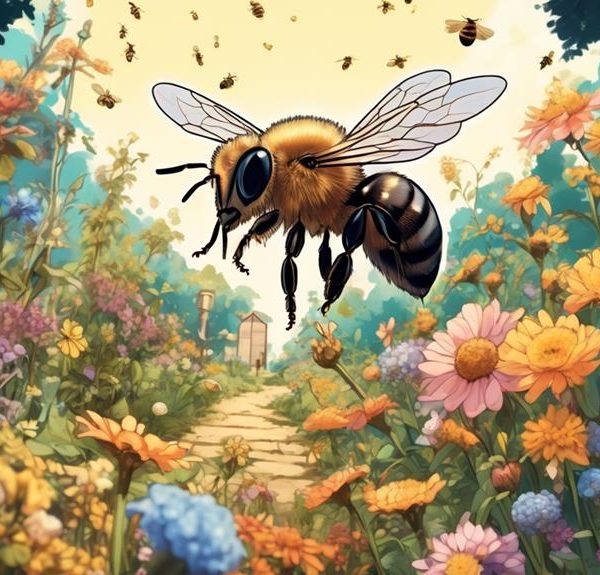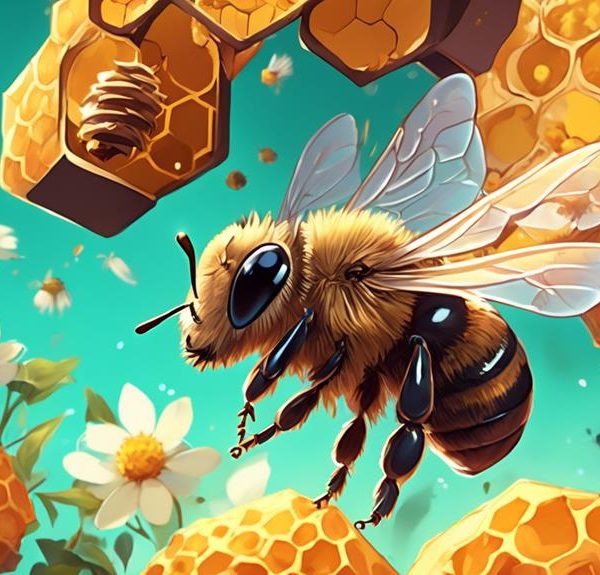Dive into the intriguing world of mason wasps and carpenter bees to unravel their complex, and often misunderstood, relationship.
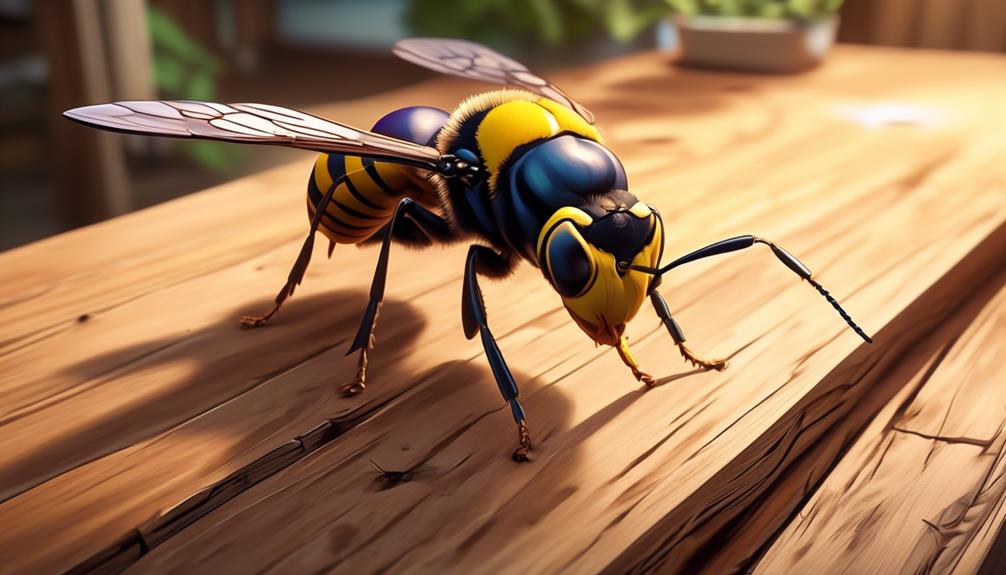
Do Mason Wasps Kill Carpenter Bees?
Just as you're watching a carpenter bee buzzing around your garden, a mason wasp hovers into view.
You've probably heard that these wasps are natural enemies, but is it true that mason wasps kill carpenter bees?
It's not an uncommon question, and it's one that's sparked a lot of interest, and even debate, among entomologists and nature enthusiasts alike.
But before you make any assumptions, you'll want to take a closer look at the interactions between these two fascinating creatures.
Key Takeaways
- Carpenter bees and mason wasps have a unique interaction where mason wasps reuse the nests constructed by carpenter bees without harming them.
- Mason wasps primarily prey on caterpillars and do not target carpenter bees due to their size and strength.
- The relationship between mason wasps and carpenter bees is an example of commensalism, where one organism benefits without harming the other.
- Natural pest control using mason wasps can be an eco-friendly and cost-effective method but requires time and consideration of ecosystem balance and biodiversity impact.
Understanding Carpenter Bees
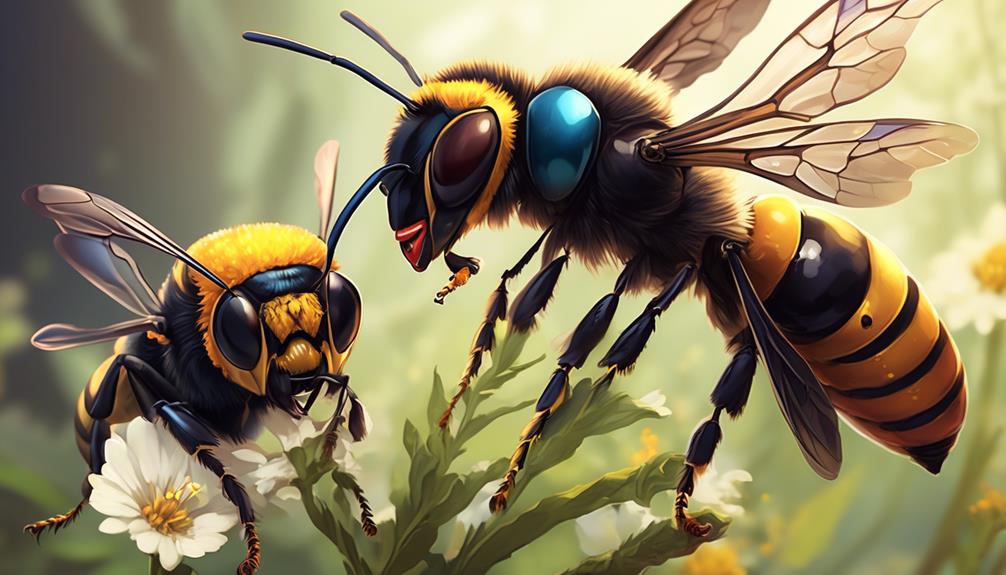
Diving into the world of carpenter bees, you'll find that these fascinating creatures aren't just your average bees; they're wood-boring insects with a unique life cycle and behavior. Unlike honey bees, they don't live in colonies and aren't covered in fuzzy hair. Instead, they're solitary, with each female excavating her own nest in wood.
You'll notice their distinctive appearance: a shiny, black body about an inch long and broad wings that span over their bodies. Male carpenter bees can't sting, but they're territorial and may hover around you if you get too close. Females, on the other hand, can sting but they're generally docile unless provoked.
They've developed an interesting nesting habit. The female drills a tunnel into wood, where she lays her eggs, seals them with pollen for the larvae to eat, and then exits, never to return. This lifecycle is an example of how carpenter bees are adapted for survival in their environment, which helps explain their prevalence.
In understanding these insects, you're better equipped to appreciate their role in the ecosystem, where they're key pollinators, and manage them effectively if they become a nuisance.
The Life Cycle of Mason Wasps
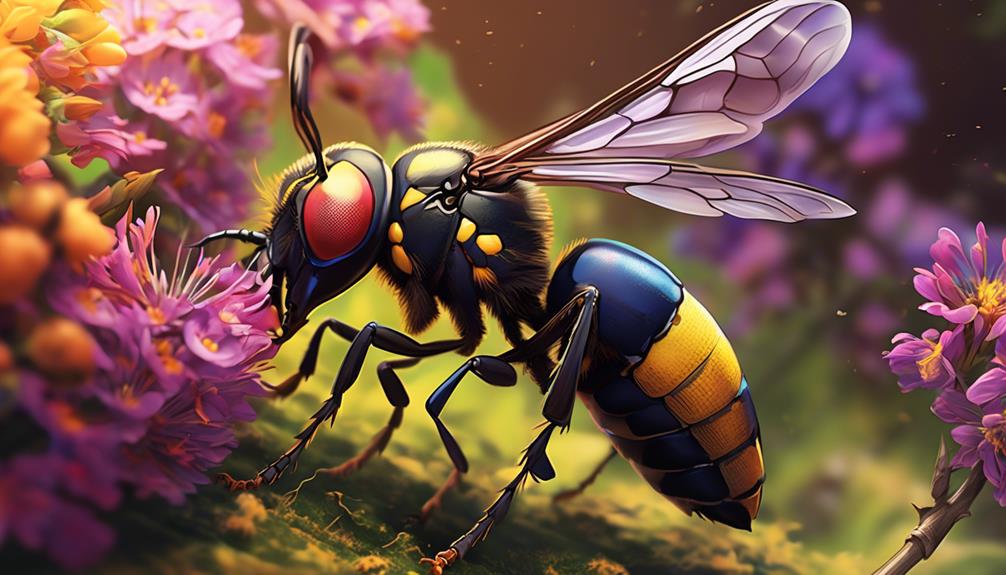
Moving on to Mason wasps, you'll discover they have an equally unique and fascinating life cycle, marked by distinctive behaviors and adaptations. These solitary insects undergo a four-stage life cycle: egg, larva, pupa, and adult.
You'll find it interesting to know that Mason wasps lay their eggs in masonry structures, hence the name. They use mud to build nests, typically in pre-existing holes or crevices.
Take a look at the table below for an overview of each stage:
Stage | Duration | Description |
|---|---|---|
Egg | 1-2 days | The wasp lays an egg in a mud nest and seals it with more mud. |
Larva | 1-2 weeks | The larva hatches and begins to consume the food left by the mother wasp. |
Pupa | 1-2 weeks | In this dormant phase, the larva transforms into an adult wasp. |
Adult | Variable | The adult wasp emerges from the nest, ready to mate and continue the cycle. |
Mason wasps show a remarkable ability to adapt to their surroundings and ensure the survival of their species. Their life cycle is a testament to their resilience and resourcefulness.
Interactions Between Mason Wasps and Carpenter Bees
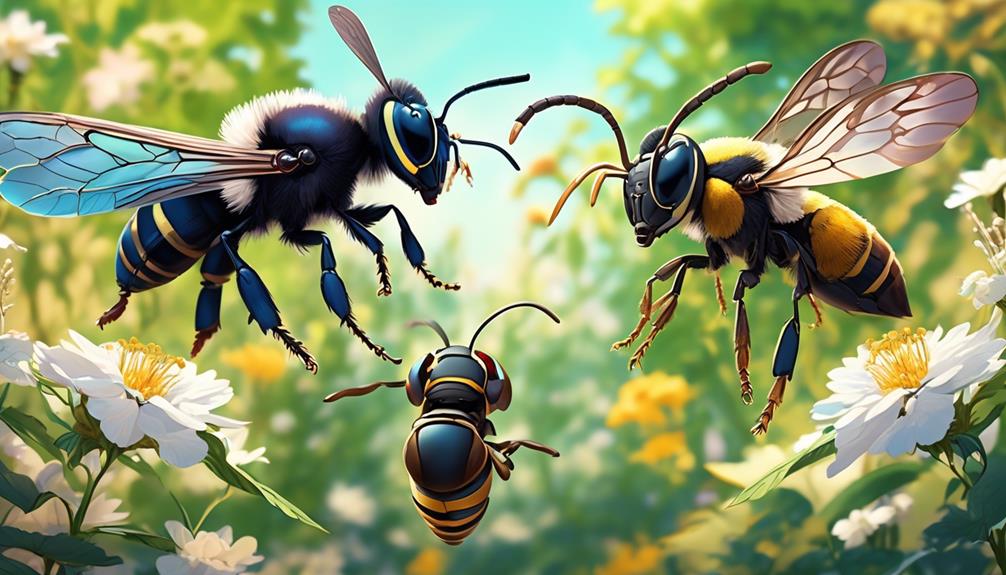
While observing these remarkable Mason wasps, you might also notice their intriguing interactions with another species, the Carpenter bees. Though they exist within the same ecological space, their interactions aren't as hostile as you might expect.
Mason wasps, known scientifically as 'Eumeninae', don't actually prey on Carpenter bees. Instead, they're attracted to the nests that Carpenter bees, or 'Xylocopa', construct. These bees carve out nests in deadwood, which are then opportunistically used by Mason wasps for their own brood.
There's a certain harmony in this interaction. Mason wasps don't destroy the nests; they simply reuse them. After the Carpenter bees have left, the Mason wasps move in, laying their eggs and stocking the nests with paralyzed caterpillars as food for their offspring.
The interaction between these two species is a prime example of commensalism, a type of ecological relationship where one organism benefits while the other is neither harmed nor helped. Mason wasps gain a ready-made home without causing any direct harm to Carpenter bees. This interaction is testament to the intricate balance that exists in nature, where every creature plays its part in maintaining the equilibrium.
Do Mason Wasps Prey on Carpenter Bees?
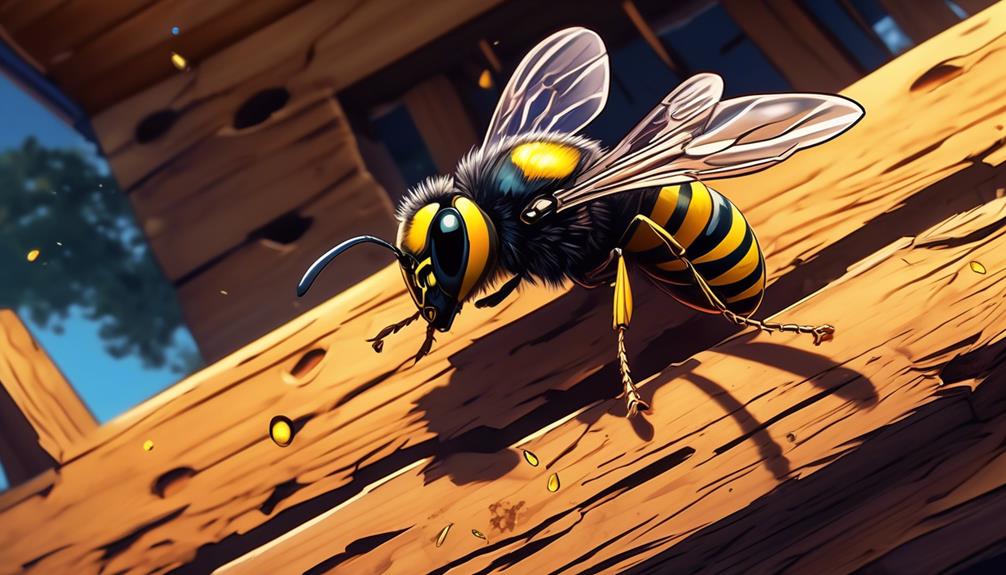
Despite what one might initially suspect, Mason wasps don't actually prey on Carpenter bees. Your understanding of this relationship is important in the realm of entomology. While Mason wasps are known to be carnivorous, their diet primarily consists of caterpillars and not Carpenter bees.
Mason wasps are solitary wasps, which means they don't live in colonies like other wasp species. They're known to paralyze their prey using venom, then seal them in their nests made of mud, providing a live meal for their offspring when they hatch. However, Carpenter bees, larger and stronger, aren't suitable prey for the Mason wasps.
Carpenter bees have robust bodies with strong mandibles that they use to burrow into the wood to build their nests. This physical strength, along with their size, makes them unsuitable prey for the Mason wasps. Furthermore, Carpenter bees are equipped with a potent sting that could pose a threat to any potential predator, including the Mason wasps.
Natural Pest Control: Pros and Cons
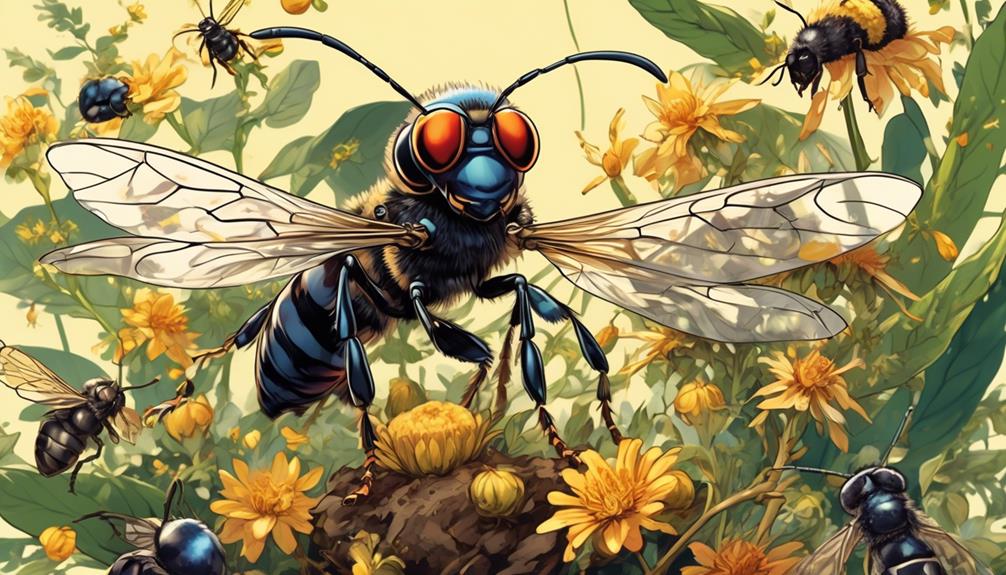
Have you considered the advantages and drawbacks of natural pest control methods in your battle against invasive insects? Using natural predators, such as mason wasps, can be an effective and environmentally friendly way to control carpenter bee populations. However, it's important to consider both the pros and cons before you decide on this method.
Pros | Cons | Considerations |
|---|---|---|
Eco-friendly | Unpredictable | Ecosystem Balance |
Cost-effective | Time-consuming | Seasonal Factors |
Non-toxic | Limited control | Biodiversity Impact |
Natural pest control methods are eco-friendly, as they don't introduce harmful chemicals into the environment. They can also be cost-effective, as predators like mason wasps are self-perpetuating. However, these methods can be unpredictable and time-consuming. You may not have full control over the predator populations, and it can take time for these methods to become fully effective. Moreover, you have to consider the potential impact on the ecosystem balance, seasonal factors, and biodiversity. For instance, an overly successful predator could disrupt the ecosystem balance, or seasonal changes could affect its effectiveness. Understanding these pros and cons can help you make an informed decision about natural pest control.
Conclusion
So, do mason wasps kill carpenter bees? Not exactly. While it's true that mason wasps are natural predators, their primary prey is usually caterpillars, not carpenter bees.
Remember, nature's interrelationships are complex. It's not always 'kill or be killed'. Natural pest control has its pros and cons, so it's essential to understand these interactions before relying on one species to control another.
Keep studying, keep observing, nature's intricacies are never-ending.

